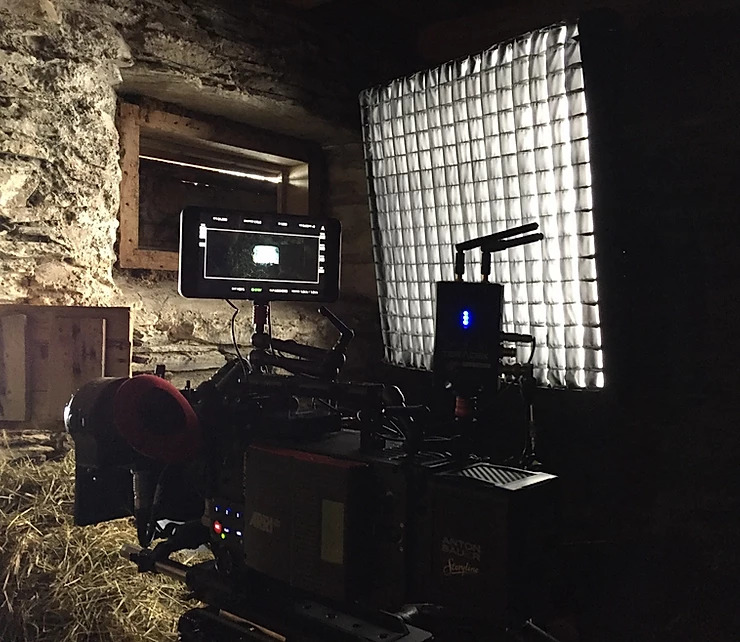JCR : As it’s a period film, the available light sources were candles, possibly outdoor torches, or kerosene lamps – but only once they arrive in United States. Indeed, throughout the first part in flashback which takes place in Sweden, the protagonists do not at all have the means to have kerosene lamps, and their little house is lit with simple candles. It was also interesting to visually regulate the night lighting setup, beginning with as much restraint as possible, such as a single candle lighting the entire room, and then beginning to multiply the sources (such as on the boat, where many people are together) and then in the interiors in the New World, where you feel more comfort, more depth in the image thanks to the growing number of sources.
For the candles, I didn’t really have any other options. But for the kerosene lamps, I started to do very concrete research. Especially because of the sequence of the boat in the storm, on which we intended to use about twenty sources of this type on set, it was impossible for safety reasons to use real lamps filled with flammable liquid !
The first idea was to use small halogen lamps that could be hidden in the props, and whose color temperature seemed to me closest to that of flame. But I quickly found myself confronted to a low ratio of power to time on battery. Indeed, this type of bulb cannot last more than about a dozen minutes on battery power.
Beyond that, you have to thread a power cable through the actor’s costume and connect it to a low voltage transformer, or a sufficiently large battery pack. So, I asked my friend Henrik Moseid (Softlights) to develop a kind of LED bulb specially designed to imitate a flame, while maintaining a life when powered by a small battery that could be hidden inside a hurricane lamp. After several tests with LEDs rated between 1,800K and 2,200K, we realized that in these very low color temperatures, we lost a lot of nuances on the actors’ skin. Especially when compared with an incandescent source (candle or tungsten lamp on a dimmer). So, we had to develop a sharp mix between deep red, amber, lime and 2,200K white elements.
After a test on location, on a face lit on one side with a candle and on the other with the “Flame”, my colorist and I agreed that it was almost impossible to tell the difference between the two. So, I gave Henrik the go-ahead to produce enough equipment for the film, most of it being very small equipment designed to be included in the prop lighting, plus a few larger, more powerful versions that could be used off-screen (in the background in houses, or in a simple Ikea Chinese lantern perched off-screen)
Can you make the “Flame’s” light flicker to imitate the movement of a flame ?
JCR : The Flame is indeed equipped with a wireless multi-directional lighting control solution, which not only allows you to adjust its intensity, but even the chromatic balance if necessary. It can also be used to make variations and wobbling. Even if in practice, on this film, we didn’t much resort to moving flames. In fact, in real life, candles and oil lamps don’t flicker that much. Unless there is wind, the flame is very stable so there is no need, as with a campfire effect, to vary the brightness.




